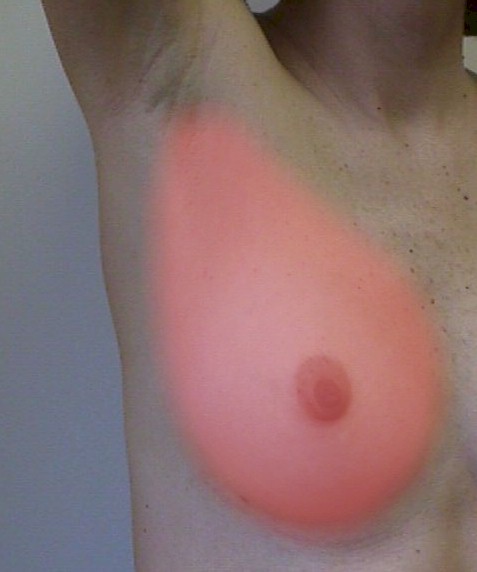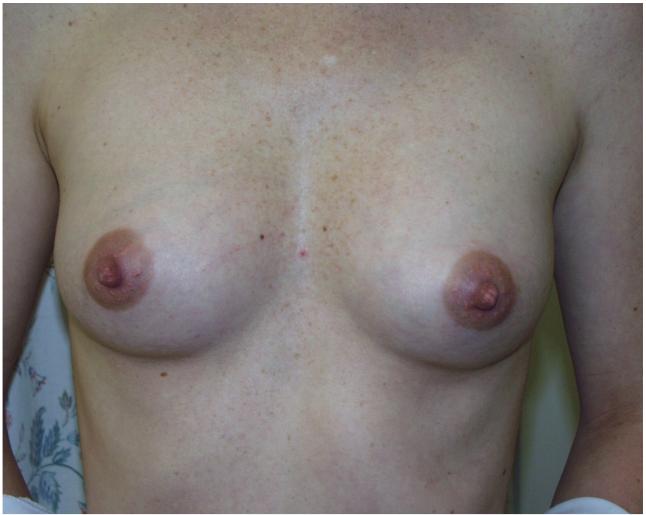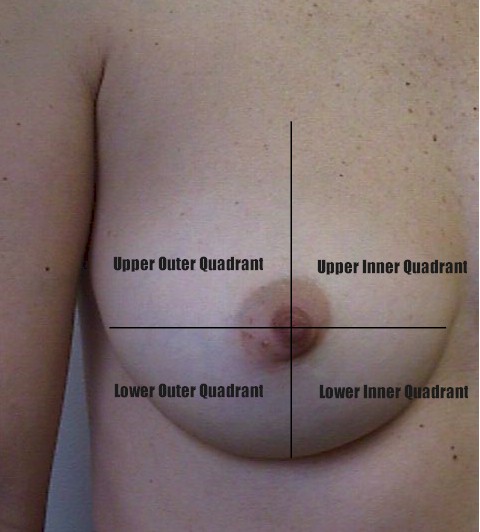|
At puberty, the female breast develops, under the influence of estrogen,
progesterone, growth hormone, prolactin, insulin and probably thyroid
hormone, parathyroid hormone and cortisol. This complex process
typically begins between ages 8 to 14 and spans about 4 years.
The
breast contains mostly fat tissue, connective tissue, and glands that
following pregnancy, will produce milk. The milk is collected in the
ducts and transported to 15-25 openings through the nipple.
 During the menstrual cycle, the breast is smallest on days 4-7, and
then begins to enlarge, under the influence of estrogen and later
progesterone and prolactin. During the menstrual cycle, the breast is smallest on days 4-7, and
then begins to enlarge, under the influence of estrogen and later
progesterone and prolactin.
Maximum breast size occurs just prior to the onset of menses.

Breast tissue extends up to the axilla
The breast is not round, but has a "tail" of breast tissue extending
up into the axilla (or armpit).
This is clinically significant because abnormalities can arise there
just as they can in other areas of the breast. During breast
examinations, this area should be palpated.

Two breasts are never identical
Breasts are never identical, comparing right to left. One is
invariably a little larger, slightly different in shape, and location on
the chest wall. The nipples are likewise never identical but show minor
differences in size, location and orientation.
The breast is divided into quadrants to better describe and compare
clinical findings.

The breast is divided into four quadrants
The upper outer quadrant is the area of greatest mass of breast
tissue. It is also the area in which about half of all breast cancers
will develop.
|